Our approach to building
Kāinga Ora has a range of housing initiatives and programmes underway to boost the supply of new housing for Kiwis. These include housing projects of different sizes and types in New Zealand’s main centres and across the country.
Why we’re good at what we do
Kāinga Ora is New Zealand’s largest residential landlord and largest client of residential building services. We partner with other agencies, local government and iwi, as well as private partners, to deliver the Government’s housing priorities and help develop sustainable, inclusive and thriving communities.
Our organisation is equipped to deliver warm, dry and safe housing across New Zealand. In the 2018-19 financial year, Kāinga Ora delivered the largest number of new homes in one year in recent history – 1,461 state homes. This is just the start of annual delivery of hundreds of new public and other homes for the foreseeable future.
Kāinga Ora has the right capabilities to tackle New Zealand’s current and future challenges. We have acquired expertise as a lead developer through large-scale residential projects such as Hobsonville Point.(external link)We will deliver different types of housing designed for modern living.
On top of that, our commitment to ensuring the housing we develop has a good mix of public, market and affordable homes (including KiwiBuild and other affordable options) means that the housing we’re supplying meets the needs of a wide range of New Zealanders.
Public housing - comprises the new and existing state homes that Kāinga Ora builds and manages for decades. Our development programmes replace, upgrade and add to New Zealand’s existing state homes.
Affordable housing - Homes in more affordable price ranges will feature in many of our new housing developments. This includes those looking for their first home.
Market Housing - Providing a variety of types of new homes is vital to addressing the country’s housing needs. Market homes are being built within neighbourhoods that also include community housing and KiwiBuild homes to create vibrant and diverse communities. By bringing a greater supply of homes to the general market for purchase we hope to help ease the pressure on pricing.
Design and planning
Kāinga Ora’s construction activities incorporate design principles and controls that ensure the housing we develop is of good quality and meets the needs of the communities we serve.
When we build we consider infrastructure, like roads and amenities, such as parks, to create neighbourhoods that are functional, attractive and that further local community aspirations.
We have design guidelines in place for the building of state housing and our standard and bespoke designs for new homes apply Te Aranga Design Principles. These principles are founded on intrinsic Māori cultural values and aim to enhance mana whenua presence, visibility and participation in urban design.
In Auckland’s CBD, Kāinga Ora is delivering 276 apartments on Greys Avenue(external link). The design has been developed in partnership with Ngāti Whātua Orakei utilising Te Aranga principles. This has enabled us to develop the project in a way that is shaped by Māori culture and identity.
We are improving the accessibility of our new and existing state homes for our customers. Our goal is to provide safe homes which enable people to live with independence, be able to invite whānau and friends to visit, and be part of the community they live in without barriers.
Universal design delivers public housing that is more liveable for the entire population, including (but not limited to) young and growing families, people of all ages who experience temporary injury or illness, those with mobility, visual or cognitive impairments, and the growing aging population.
Universal design covers the following broad areas:
- Access: wide paths from car-parking area and street, step-free where possible, or the ability to install a ramp in future.
- Usability: easy to use door and cabinetry handles, bathroom and bedroom on the same entry level as the main living area (or be adaptable to include these two features at a later stage.
- Safety: slip-resistant flooring in bathrooms and kitchens.
- Adaptability: bathroom size suitable for conversion to be fully accessible if needed in the future.
Read more about our Accessibility Policy.
Homestar is run by the New Zealand Green Building Council (NZGBC), and is an independent rating tool for assessing the health, efficiency, and sustainability of homes. In 2019, Kāinga Ora committed to achieving a 6Homestar rating on all public and supported housing new builds, to help ensure consistent wellbeing and environmental outcomes.
The NZGBC has released the 5th version of Homestar which replaces version 4.1—the version Kāinga Ora currently designs and builds to (e.g. 6Homestar v4.1 will become 6Homestar v5).
Kāinga Ora will adopt a stepped approach (funding dependent) towards fully adopting the new version. This means that all new public and supported housing projects starting from 1 January 2023, will use the Kāinga Ora Homestar Version 5 Transition Standard. It will ensure we're delivering good quality homes that are warmer, drier and more efficient than ever.
The Kāinga Ora Homestar Version 5 Transition Standard equates to:
- The current 6HS v4.1 Kāinga Ora standard; plus
- Building Code Clause H1 5th Edition requirements (required on Kainga Ora redevelopment projects from 1 October 2022); and
- Adopting the HS v5 tools and processes during the design phase (but not specifying to 6HSv5 yet)
Implementation dates: All new Kāinga Ora public and supported housing projects briefed from 1 January 2023 will register with NZGBC under the Kāinga Ora Homestar V5 Transition Standard until further notice. Further information on our move to 6 Homestar v5 will be issued in the coming months.
Resources
CA-GDL-013 Guideline to Homestar v5 Transition Standard [PDF, 912 KB]
This guideline provides a comprehensive explanation of the Kāinga Ora Homestar v5 Transition Standard, including why Kāinga Ora is adopting the Transition Standard, key changes and important dates.
This guideline is designed to inform Kāinga Ora stakeholders of the expectation with regard to designing and specifying projects to comply with the Kāinga Ora Homestar v5 Transition Standard. It describes the process, the criteria for achieving the Transition Standard and evidence needed for Design and Construction approval.
For more information contact Homestardesign@kaingaora.govt.nz
Kāinga Ora is undertaking the biggest public build programme in decades.
Our Housing Delivery System (HDS) is what we’re calling a new way of planning and building houses to deliver much needed, quality homes for whānau faster and at a lower cost.
Scaling up traditional build methods will not, on its own, enable us to produce housing quickly or cost effectively enough to meet the significant ongoing demand for public housing.
By reducing design, planning, and construction timeframes in a considered way, we can build more homes for whānau every year and provide a reliable pipeline of work for the construction industry.
The current HDS testing programme is crucial to ensuring a robust system that endures and can meet the ongoing need for public housing.
Read more on our Housing Delivery System project
Construction Sector Accord
Kāinga Ora – Homes and Communities is part of the Construction Sector Accord that was launched in April 2019 by the Prime Minister, Accord Ministers, and the industry Accord Development Group made up of 13 sector leaders from across industry and government.
The Accord created a platform for industry and government to work together to meet some of the key challenges facing the sector including skills and labour shortages, unclear regulations, a lack of coordinated leadership, an uncertain pipeline of work and a culture of shifting risk.
We’re proud that Bader Ventura, the first Kāinga Ora development to be built to Passive House standard, has been selected as a Beacon Project(external link) by the Construction Sector Accord. Bader Ventura is an exemplar of leadership and innovation in the sector, and supports the Accord's vision of 'a higher performing construction sector for a better New Zealand'.
Read the Construction Sector Accord(external link)
Watch The Accord's series of webinars 'Towards High Performance(external link)'.
Increasing our homes in the regions
We have increased the number of cities and towns we're looking to build in. This is in line with the Government's plan to increase public housing supply across New Zealand.
Our new homes will be modern, attractive and easy to maintain, accommodating both families and individuals. Most of the houses being constructed are one or two-bedroom, with some three and four-bedroom homes. They will be carpeted, insulated and double-glazed with thermal curtains. The homes will be sited on landscaped sections with private outdoor living areas, including parking.
All proposed buildings will be within the local Council’s district plan requirements and will take into consideration boundary lines and the orientation of the building to optimise sunlight. Where we are building homes on currently tenanted properties, we'll ensure adequate space between the properties.
If we need to remove an existing house to redevelop the site, we'll work closely with tenants to relocate them to other suitable homes, preferably in the area.
The feature boards below will give you an idea on what the homes will have.
one-bedroom homes [PDF, 617 KB]
two-bedroom homes [PDF, 584 KB]
two-bedroom duplex homes [PDF, 682 KB]
three-bedroom homes [PDF, 541 KB]
three-bedroom 2-storey homes [PDF, 610 KB]
four-bedroom homes [PDF, 632 KB]
The architect's renders below give an idea of what some of the new homes will look like.
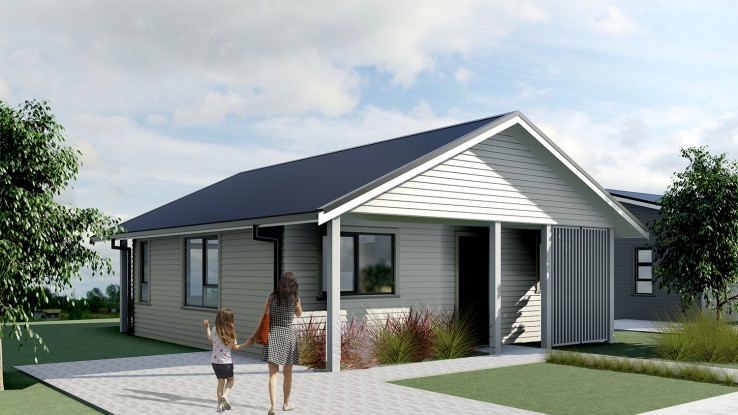
Architect's render of a one-bedroom home
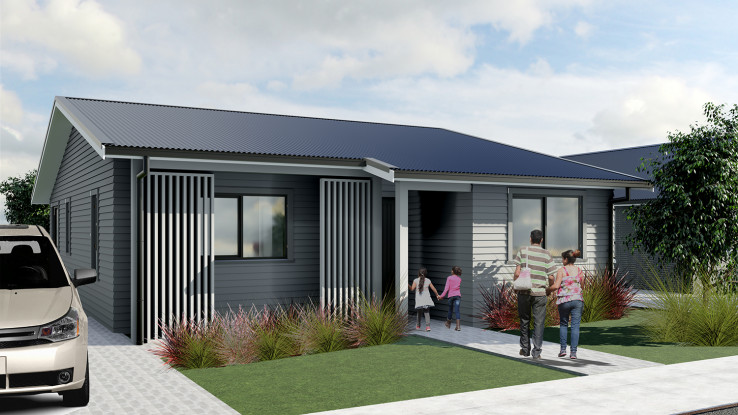
Architect's render of a two-bedroom home

Architect's render of a two-bedroom home
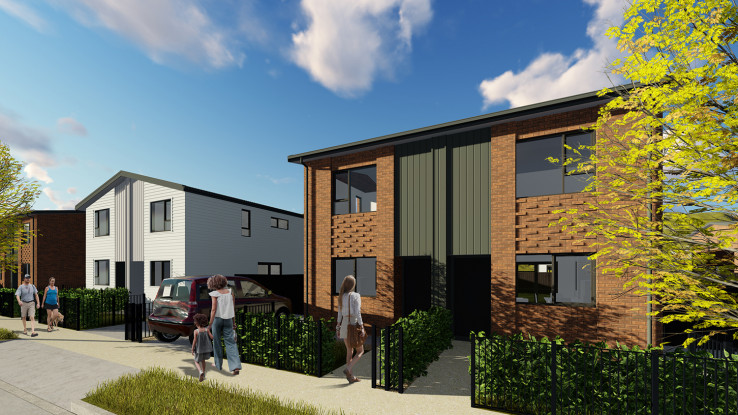
Architect's render of a two-bedroom home
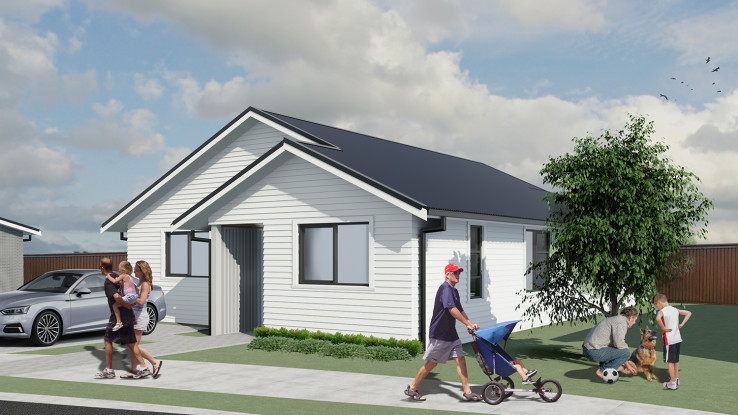
Architect's render of a three-bedroom home
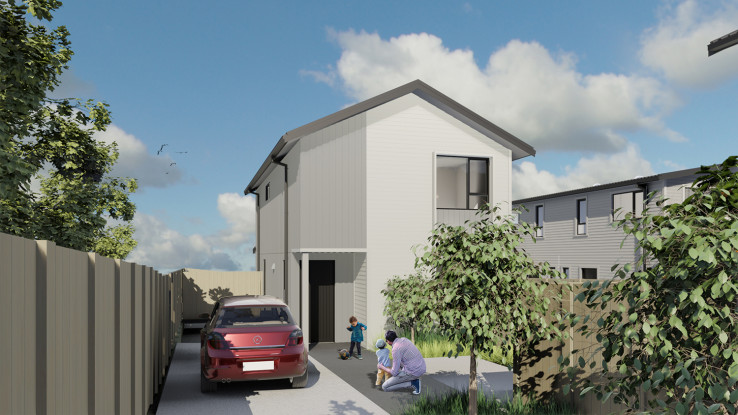
Architect's render of a three-bedroom home
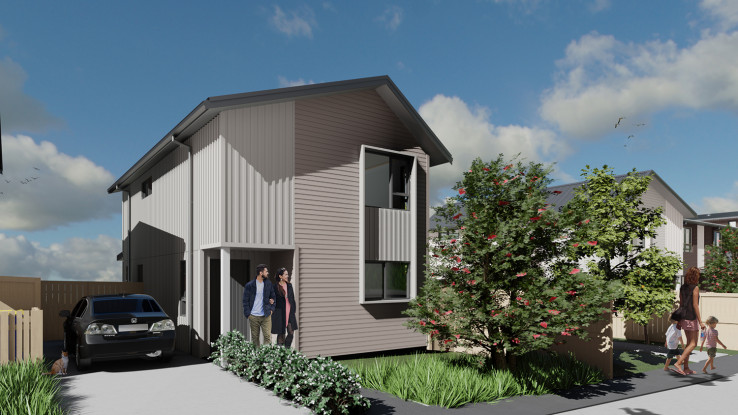
Architect's render of a three-bedroom home
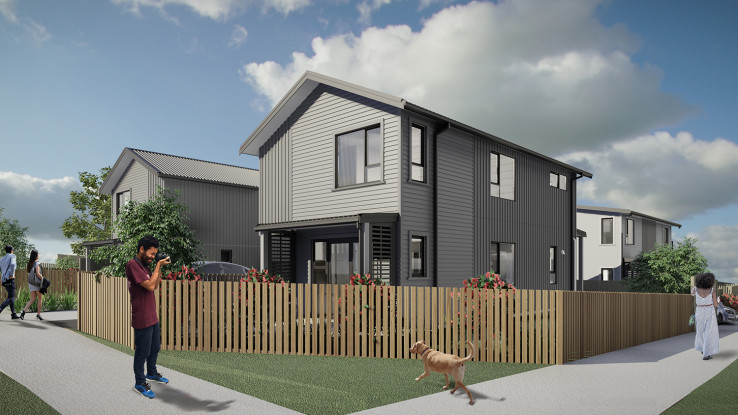
Architect's render of a four-bedroom home
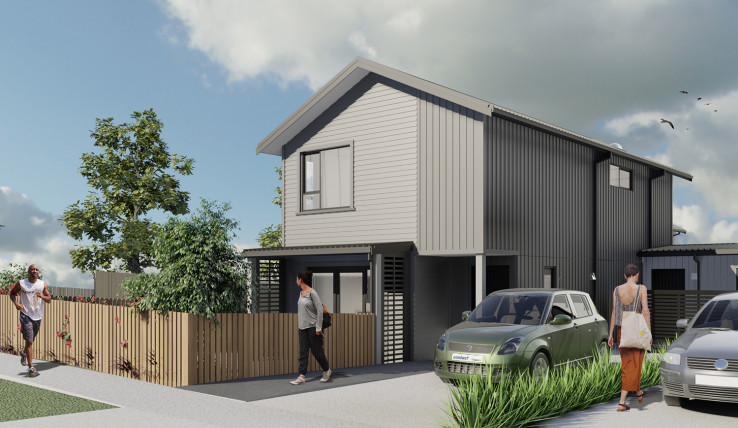
Architect's render of a four-bedroom home
Page updated: 7 July 2023
